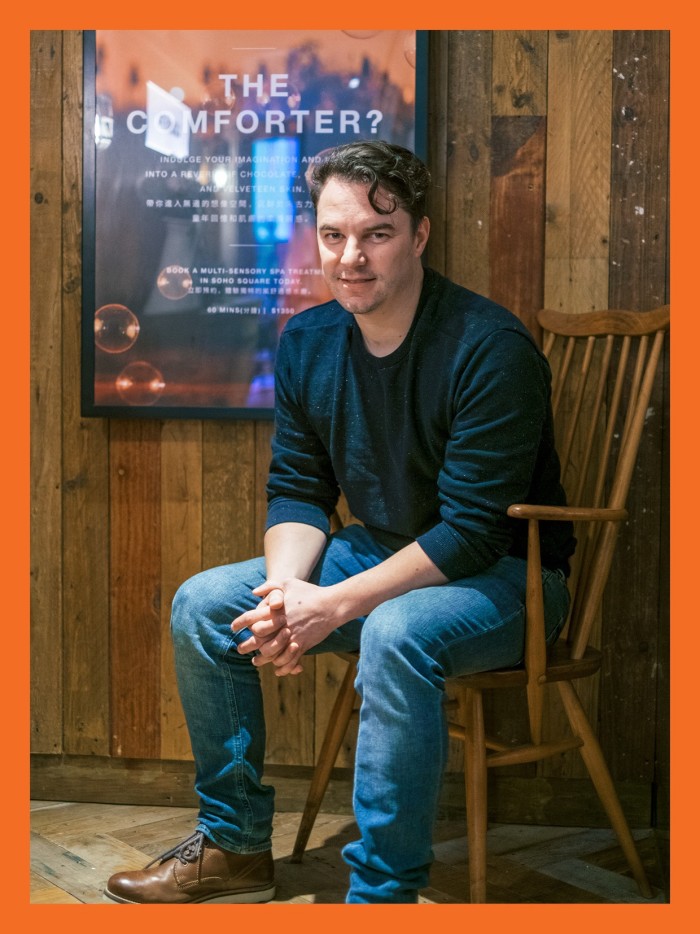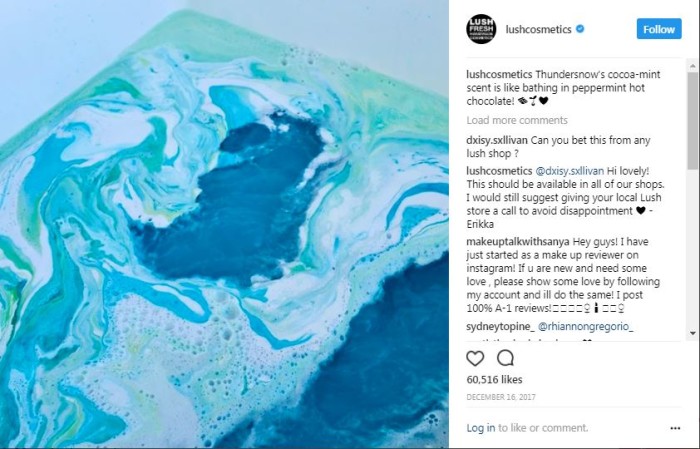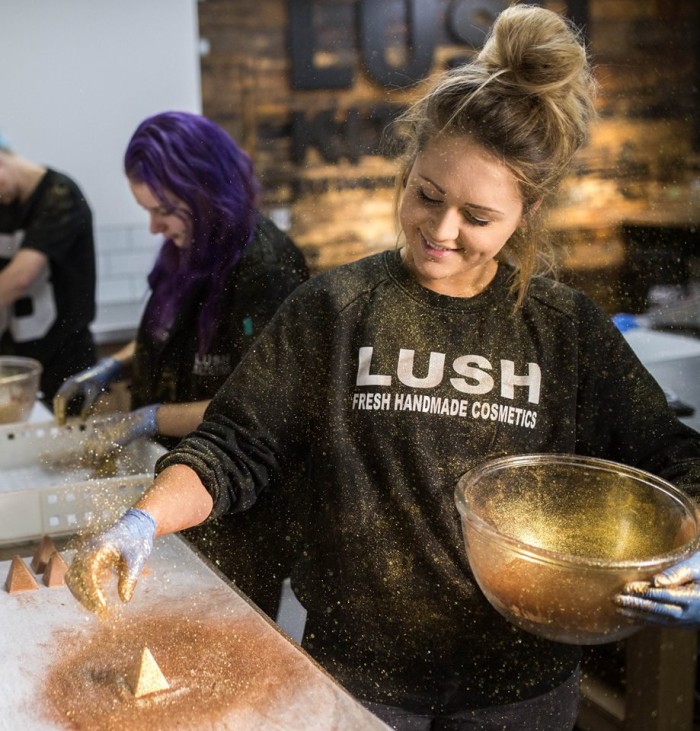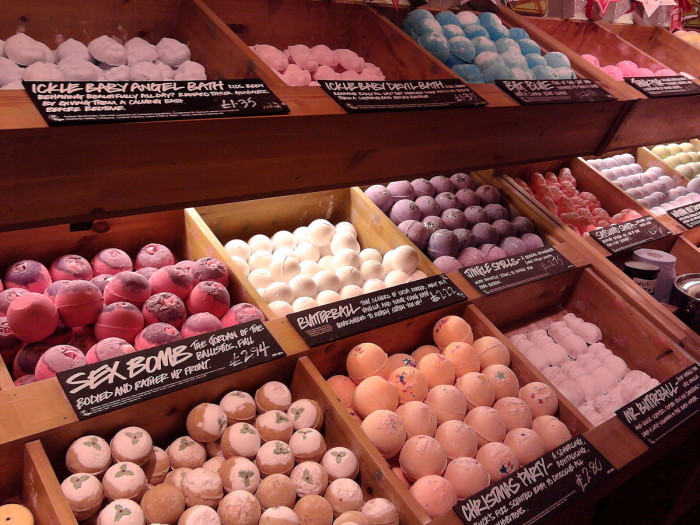
Lush explores the two biggest dilemmas when retail meets digital
share on
This story appeared in the Marketing Magazine Hong Kong Futurist issue as "Putting a bomb under the beauty industry".
More than 15 years ago, Jack Constantine, Lush founders Mark and Mo Constantine’s youngest son, joined the beauty and cosmetic company to work in product invention. At the time, his mother and he reinvented the original bath bomb with a new double-layered version, initiating the social trend for sharing bath art using #LushTime.
This time, Jack wants to set off a (bath) bomb on digital.
As the chief digital officer for Lush Digital, he has spearheaded the brand’s digital marketing by building websites and social media accounts, and by introducing the brand to online commerce – which now contributes about 28% of the GBP1.1 billion business.
But there’s much more work to do to accomplish his ultimate vision: a digital estate.
From building creative technology in-house based on open source technology, including till systems in shops, staff and customer apps, websites and data management to optimising e-commerce and all the marketing around it, as well as introducing a new subscription model to Asia in 2018, and even expanding its very own publishing house – a “digital estate” means Constantine is now (re)developing the digital infrastructure of the whole business in every possible way.
“There are a lot of similarities between creating a product and developing digital,” he says, as he recalled things his parents taught him about product development.
There are a lot of similarities between creating a product and developing digital.
Similar to how the brand’s products stand distinctively on their own, he expects his team to create a digital product (as simple as its Facebook or Instagram accounts), package it up, then send it out to the world and watch how the product disrupts in its own way.
1. A publishing house v.s. advertisements
For instance, Constantine says it has built six new channels under Lush’s own publishing house. Different subdivisions focus on different interests. Lush Time delivers stories behind the sourcing and purchase of ingredients through topical and newsworthy angles; Lush Life orients content around lifestyle and connects topics to its lifestyles services such as yoga and spa; and Gorilla is the art-house channel that advocates creativity and eccentricity, unveiling characters and inspirations from the brand.
“These channels are building up their own life with their own TV shows and content. It (the publishing house) is a bigger arm of our business now,” he explains.
“They are providing people who are interested in all these different topics and angles ways of building a community, so people who might as well have never heard of Lush will be drawn to our sites, engage with each other and be a part of the conversation.
Similarly, on social media, where the brand has had famous success in terms of followers and engagements, Constantine says it’s also about building a community, which means the brand has to be playful and bold in experimenting with ideas.
“When we try to invent a new product, we get in the lab, become playful, add a drop of this and that and experiment with the formula under a deadline, that is how we usually invent and put the shower gel onto store shelves within a week,” he says.
Constantine thinks it’s all about a tight deadline to ensure the brand is quick in response, as well as give staff the freedom to “just go and try those ideas”.
Last year, for example, when a photo of his staff making a glitter bubble bar went viral on social, and customers cried out to buy the featured jumper, he says they got glittery jumpers made and on sale in two weeks, and customers “just loved it”.
“This is how you stay reactive and stay fun, responding and sometimes contributing back to the community – you become a part of it and level it up from a brand perspective.”
While the company has seen massive growth in revenue over the past three years, in tandem with growth on social media, he says it doesn’t pay for any advertising.
“We work with social media and search engines, but one of our core approaches is to draw more people to our own platform, our own site,” he says.
“What’s happening with social media is the control of the companies that own social media channels. They dictate whether people can see your content or not, or do you have to pay more to let them see it. We just want to have a direct relationship with our customers.
What’s happening with social media is the control of the companies that own social media channels. They dictate whether people can see your content or not, or do you have to pay more to let them see it.
“For us, I imagine over time – that yes, we do have a different approach to different channels – but we really focus on our own channels, extending out and being part of the wider conversation, but not getting too stuck in an external channel where you kind of lose control.”
After all, he thinks the only way forward for all businesses is to start regarding themselves as a publisher, because “customers will not be happy just being advertised to” unless they feel like they are a part of something.
The only way forward for all businesses is to start regarding themselves as a publisher, because customers will not be happy just being advertised to unless they feel like they are a part of something.
“The message, the communication, they are all that matters, and they have to be right on point.”
2. An online subscription model v.s. brick-and-mortar
Looking around, he says the beauty and cosmetic industry is heavily advertising-based, where most of the time it is struggling with breaking out of the cycle of being a traditional advertiser and going into the reality of being a community.
“Big players never excite me like Fenty Beauty or other start-ups do,” he says.
Big players never excite me like Fenty Beauty or other start-ups do.
With a strong focus on publishing strategies, he is not only growing the total audience but is also building a subscription-based service to link contents and products, while expanding the brand’s fan clubs.
In August last year, the brand rolled out the new subscription service, starting in the US, for bath bombs to let customers choose which products they would like and how frequently they would like to receive them, which means Lush customers will never run out of bath bombs.
“We know people like getting sacks of products, and we needed a set-up that puts exclusive products and content in our subscription models, giving them all these different services,” he says.
“We haven’t completed the strategy, but that’s the direction we will be taking the money.”
Now also looking at building the subscription services in the Asia region, ideally this year, he says the brand is in a good position from a technological point of view, although the sensitivity a brand has to be aware of in Asia can be a challenge.
“My direction is – there’s always a balance, but from an e-commerce point of view, what we can provide in Asia is very similar to what we can offer in the UK and Europe. Design-wise, it will look the same.”
My direction is – there’s always a balance, but from an e-commerce point of view, what we can provide in Asia is very similar to what we can offer in the UK and Europe.
There are also talks in the industry about how e-commerce is to blame for brick-and-mortar stores’ recent downturn, but with a strong performance in worldwide sales in 2016 of GBP728 million, an increase of 25% over the previous year, and projected sales of GBP941 million in 2017, Lush has a different opinion.
And Constantine believes its subscription offering, an enhanced e-commerce model, will only direct more new customers to its high street stores.
“We are providing the best multi-sensory hands-on experiences in high streets, like spa and treatments, and digital doesn’t lend itself to that. You have to touch to learn how it feels,” he says.
Adding that it has seen a surprisingly young age range – the generation often believed to primarily be on social and online – engaging with the brand in brick-and-mortar stores, he believes the retail environment thrives from a great digital community engagement.
“I think we are going to see a resurgence in retail,” he says.
I think we are going to see a resurgence in retail.
“Right now, retail has become a bit stagnant, and retailers have become a bit lazy. They think they can have someone behind the till, and customers will buy something from you automatically like it’s a given.”
[The retailers] think they can have someone behind the till, and customers will buy something from you automatically like it’s a given.
Based on how big players have been interestingly changing their ways to become more experience-led and relevant, or new start-ups disrupting old rules, he feels that customers will come back again.
“It’s the time when you have some fun, and give yourself some time to experiment. You never know, but that’s how I found the right formula for the brand’s second most popular product (shampoo bar),” he says.
share on
Free newsletter
Get the daily lowdown on Asia's top marketing stories.
We break down the big and messy topics of the day so you're updated on the most important developments in Asia's marketing development – for free.
subscribe now open in new window




